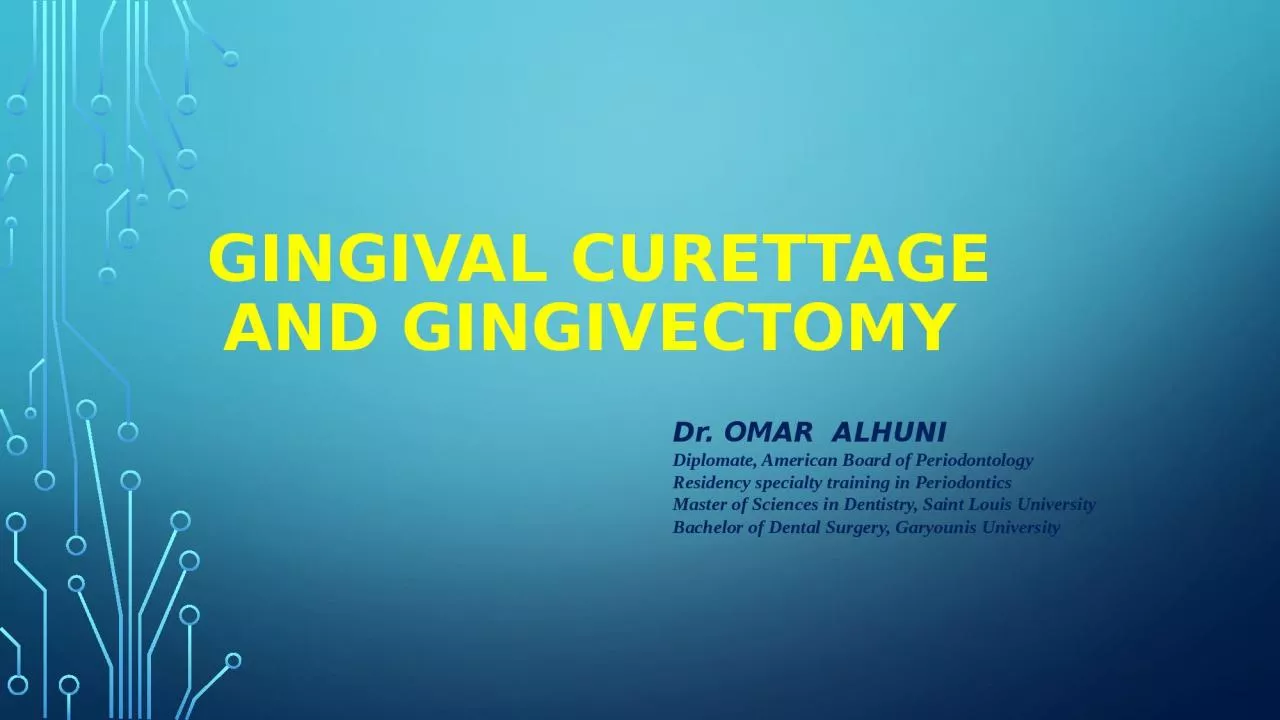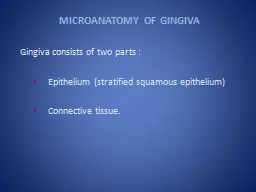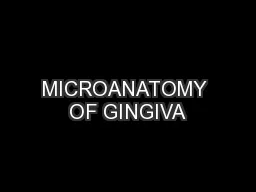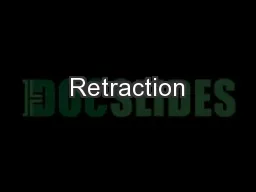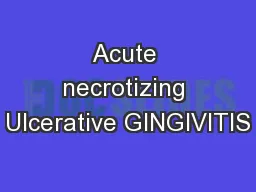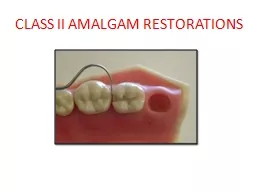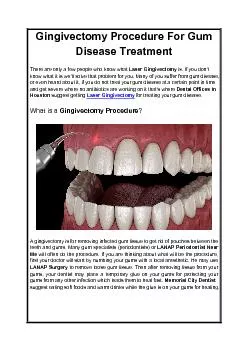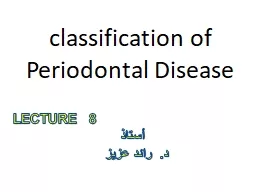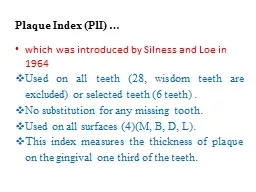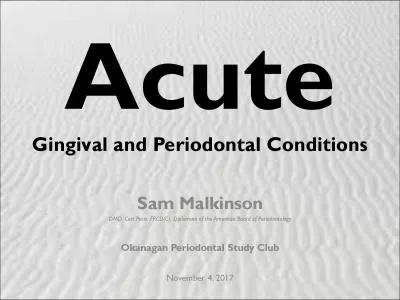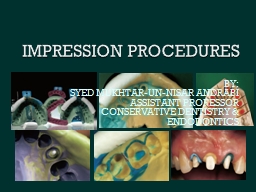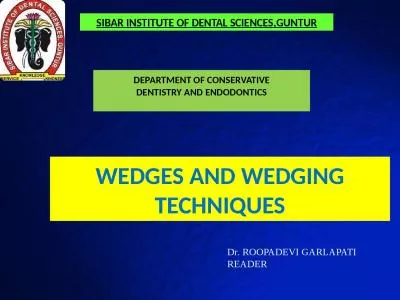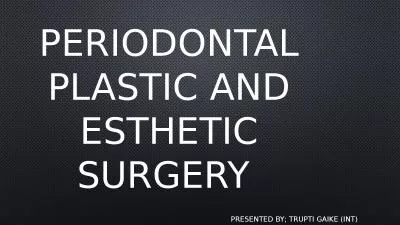PPT-GINGIVAL CURETTAGE AND GINGIVECTOMY
Author : jaena | Published Date : 2024-03-13
Dr OMAR ALHUNI Diplomate American Board of Periodontology Residency specialty training in Periodontics Master of Sciences in Dentistry Saint Louis University Bachelor
Presentation Embed Code
Download Presentation
Download Presentation The PPT/PDF document "GINGIVAL CURETTAGE AND GINGIVECTOMY" is the property of its rightful owner. Permission is granted to download and print the materials on this website for personal, non-commercial use only, and to display it on your personal computer provided you do not modify the materials and that you retain all copyright notices contained in the materials. By downloading content from our website, you accept the terms of this agreement.
GINGIVAL CURETTAGE AND GINGIVECTOMY: Transcript
Download Rules Of Document
"GINGIVAL CURETTAGE AND GINGIVECTOMY"The content belongs to its owner. You may download and print it for personal use, without modification, and keep all copyright notices. By downloading, you agree to these terms.
Related Documents

